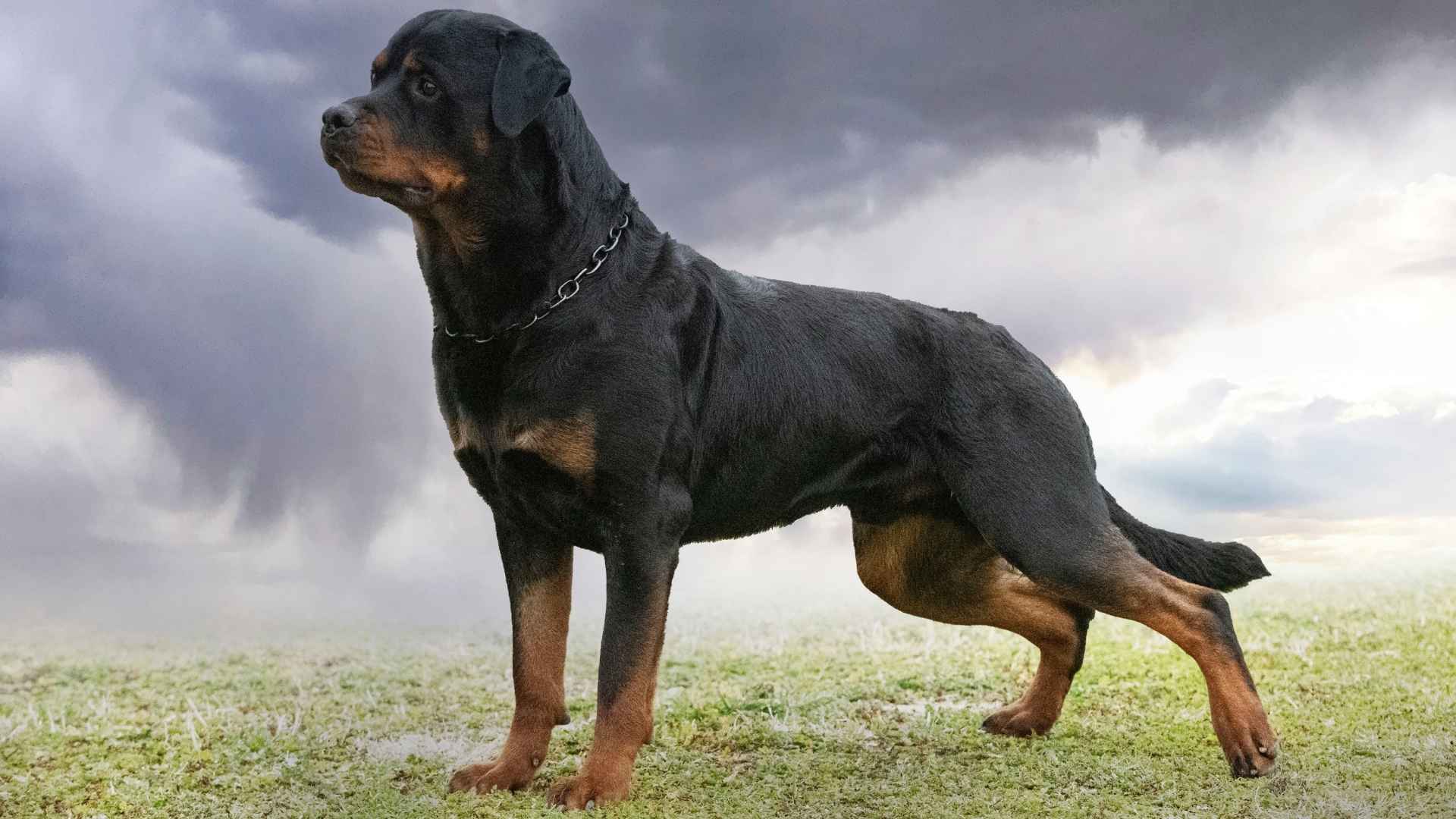In a world where we rely on alerts and apps to warn us of everything, dogs still lead the way when it comes to sensing storms. No push notification needed. No radar image required. They just know.
And lately, more people have been sharing stories online of their dogs warning them minutes—or even hours—before a storm. These stories aren’t random.
Some dog breeds have heightened weather sensitivity, responding to barometric changes, static shifts, and low-frequency rumbles. As more owners begin to notice and track this behavior, awareness is growing.
If your dog seems to know when a storm is coming before the skies even turn gray, it might be one of them. These are the dog breeds that can sense storms before they arrive.
Dog Breeds That Sense Storms Before They Arrive
1. Leonberger
Leonbergers are attentive and unusually perceptive, often pausing and scanning their environment with care. Their sharp responses to shifts in wind, light, and air pressure are notable during atmospheric changes. These reactions have been linked to their natural awareness of barometric pressure fluctuations.
Deep Sensory Processing Abilities
This breed has strong observational behaviors, especially during times of subtle environmental change. Their reactions aren’t loud or dramatic, but there is a steady alertness in their body language. Their ability to pick up on storm-related signals comes from how intensely they process sensory cues.
Behavioral Shifts in Unsettled Weather
While they are calm by nature, Leonbergers can become visibly restless in advance of severe weather. Some may pace or seek out shelter-like spots within the home, without any external trigger. It’s during these moments that people often notice how dogs act weird before storms.
Temperament Suited for Early Detection
Their stable but cautious temperament allows them to register discomfort without panic. Instead of barking or panicking, they may shift posture, seek closeness, or stay unusually still. These behaviors can often serve as early clues that something is about to change.
2. German Shepherd
German Shepherds are widely recognized for their exceptional working intelligence and loyalty. Originally developed in Germany for herding and protection, they’ve proven effective in military, police, and search operations. Their ability to quickly interpret commands and read human cues is highly valued.
Sensitivity to Surroundings
Many German Shepherds show heightened awareness of environmental changes, including barometric pressure sensitivity. This breed may become restless or alert before a weather shift or distant thunder, reacting to subtle changes that often go unnoticed by humans.
Physical Traits and Energy
This breed features a strong, muscular body with a double coat that requires consistent grooming, as per the AKC. German Shepherds demand mental stimulation and daily physical activity to remain content and well-behaved. They’re known for their stamina and thrive in homes that support structured routines.
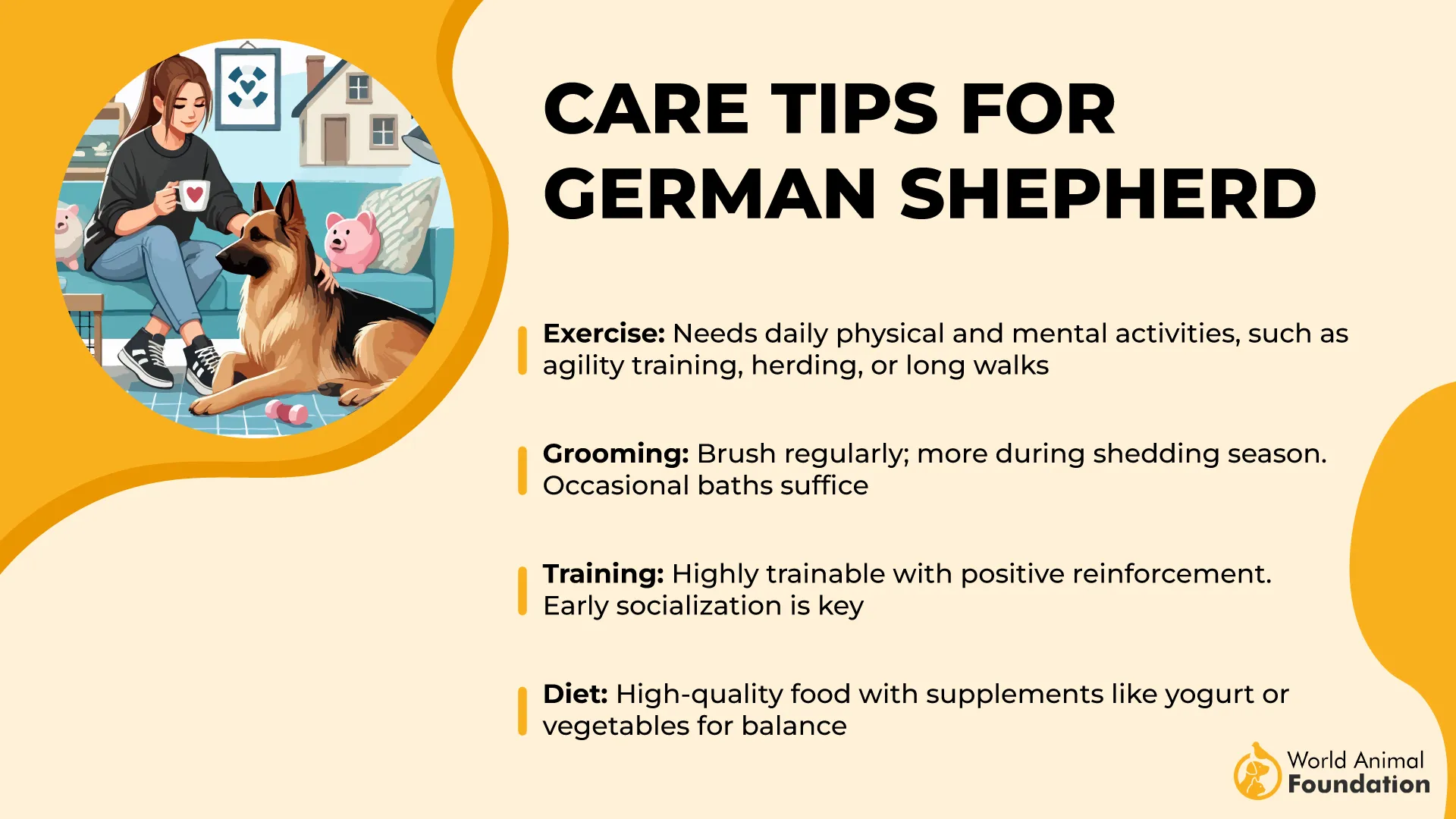
Behavior and Trainability
With the right training, German Shepherds exhibit a controlled temperament and strong protective instincts. They’re typically reserved with strangers but affectionate toward their family, especially children. Early socialization plays a key role in shaping their balanced behavior.
3. Akita
Akitas are known for their deep-rooted vigilance, a trait stemming from their long history as guardians in Japan. With an alert demeanor and sharp observational skills, they remain highly aware of environmental shifts. This sensitivity often includes recognizing changes in barometric pressure and atmospheric cues.
Hyper-Aware of Their Surroundings
Their broad, upright ears and intense gaze aren’t just for show—Akitas stay tuned in to the slightest noise or motion. This constant awareness is what helps them react quickly to unfamiliar sounds, including distant thunder or pressure changes.
Keen on Routine and Changes
Akitas thrive in structured environments and immediately notice deviations from their usual surroundings. This includes shifts in human behavior and animal patterns, which often occur just before a storm. Their reactions—restlessness, alert pacing, or unusual vocalizations—can serve as early indicators.
Strong Bond With Their Family
Known for their loyalty, Akitas are closely connected to their household and tend to be highly protective, as stated in the Akita Club of America. When they sense environmental changes, especially those hinting at danger, they become more alert around loved ones. This is where the idea of a dog’s sixth sense becomes hard to ignore.
4. Rottweiler
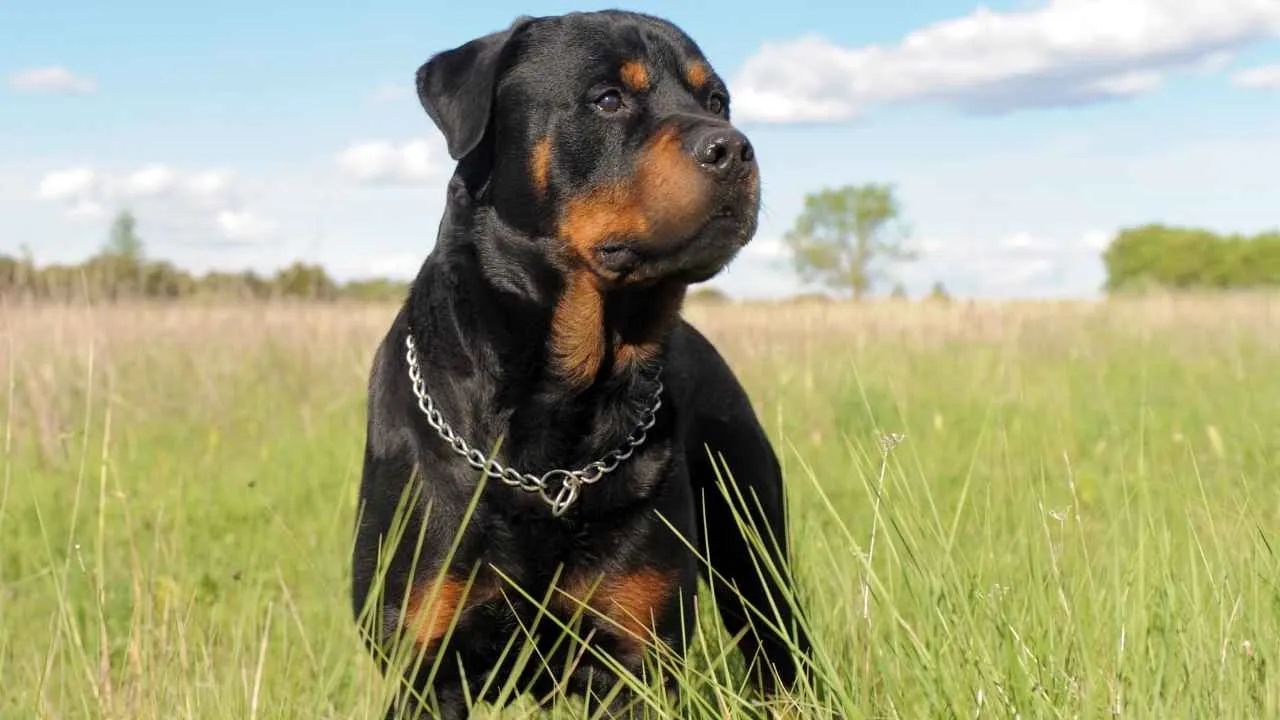
Rottweilers have keen perceptual abilities, often reacting to subtle atmospheric changes like a drop in barometric pressure or increased static in the air. This heightened awareness can prompt restlessness or pacing, especially before storms, showing they pick up on things well before humans do.
Muscular Build, Quick Reaction
Their sturdy, muscular frame allows them to react swiftly to perceived threats in their environment, including shifts in weather. Some owners have noted how these dogs utilize their strong body language and sudden movement to warn families before a storm hits.
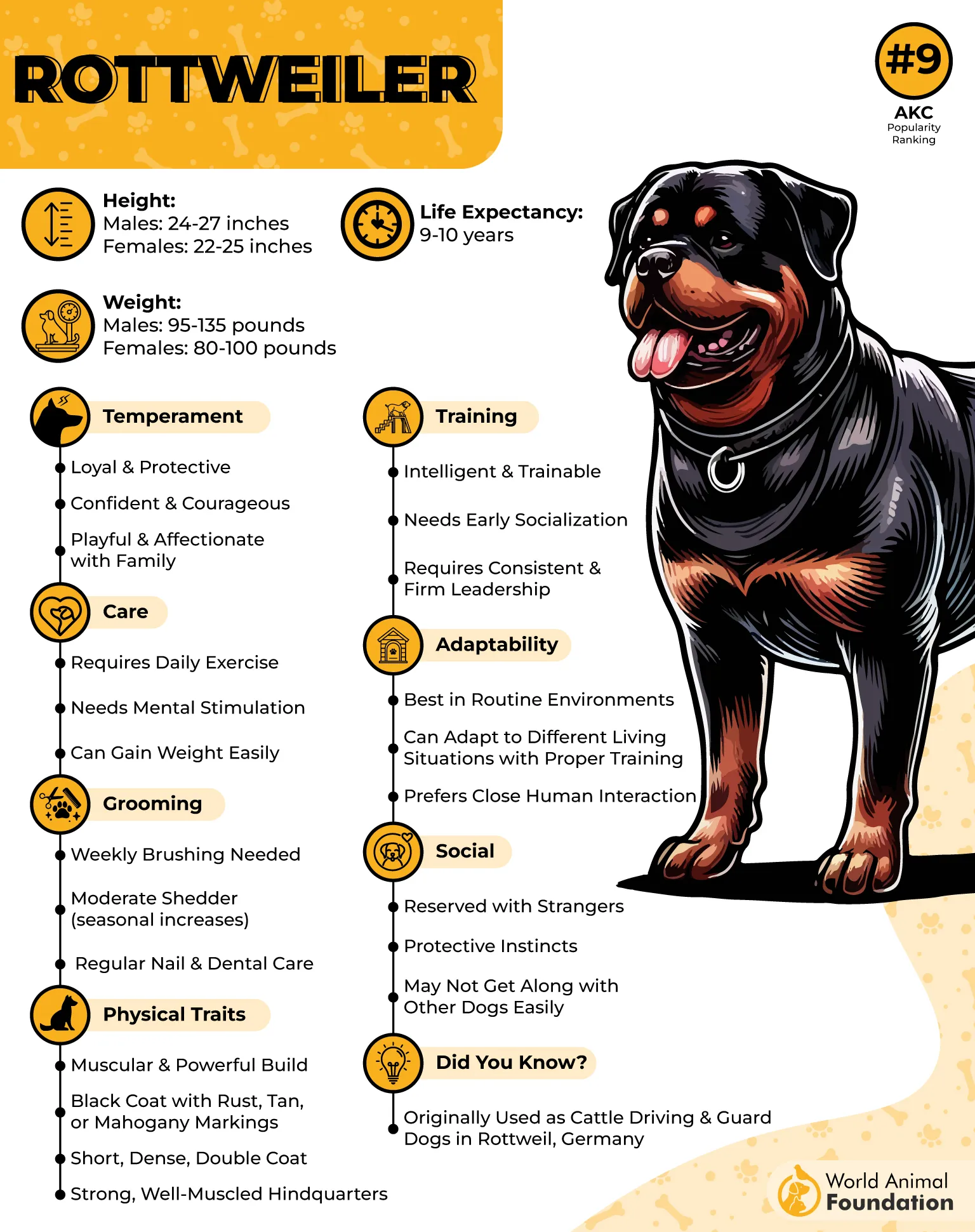
Behavioral Shifts Before Storms
One of the most noticeable dog senses in Rottweilers is their auditory sensitivity. Before storms, they may retreat to quiet spaces or become overly alert. These unusual behaviors are part of their natural instinct to protect themselves and their home from environmental changes.
Protective and In-Tune
Originally bred to drive cattle and guard property, their deep-rooted loyalty blends with instinctual sensing. Many Rottweiler owners report that their dog becomes more attached, watchful, or even vocal when a storm approaches, showing just how tuned in they are.
5. Giant Schnauzer
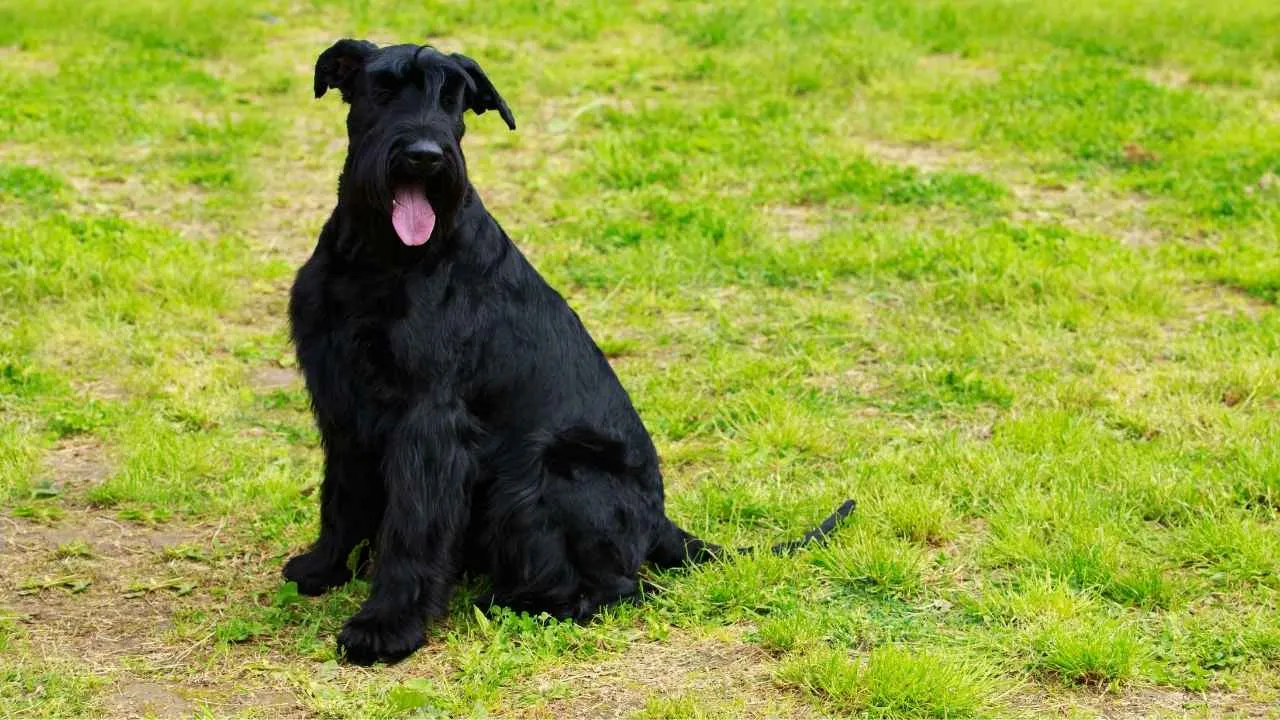
Originally bred for guarding and driving cattle, the Giant Schnauzer has a dominant presence and a sharp territorial nature. Their protective instincts make them exceptionally alert to environmental changes. Their heightened vigilance before loud weather events shows sensitivity to barometric pressure shifts.
Noticing Changes in Atmosphere
Their keen senses allow them to detect unusual vibrations or atmospheric alterations, which may help them sense impending weather. This is particularly observed when they become more restless or display subtle signs of unease before a storm.
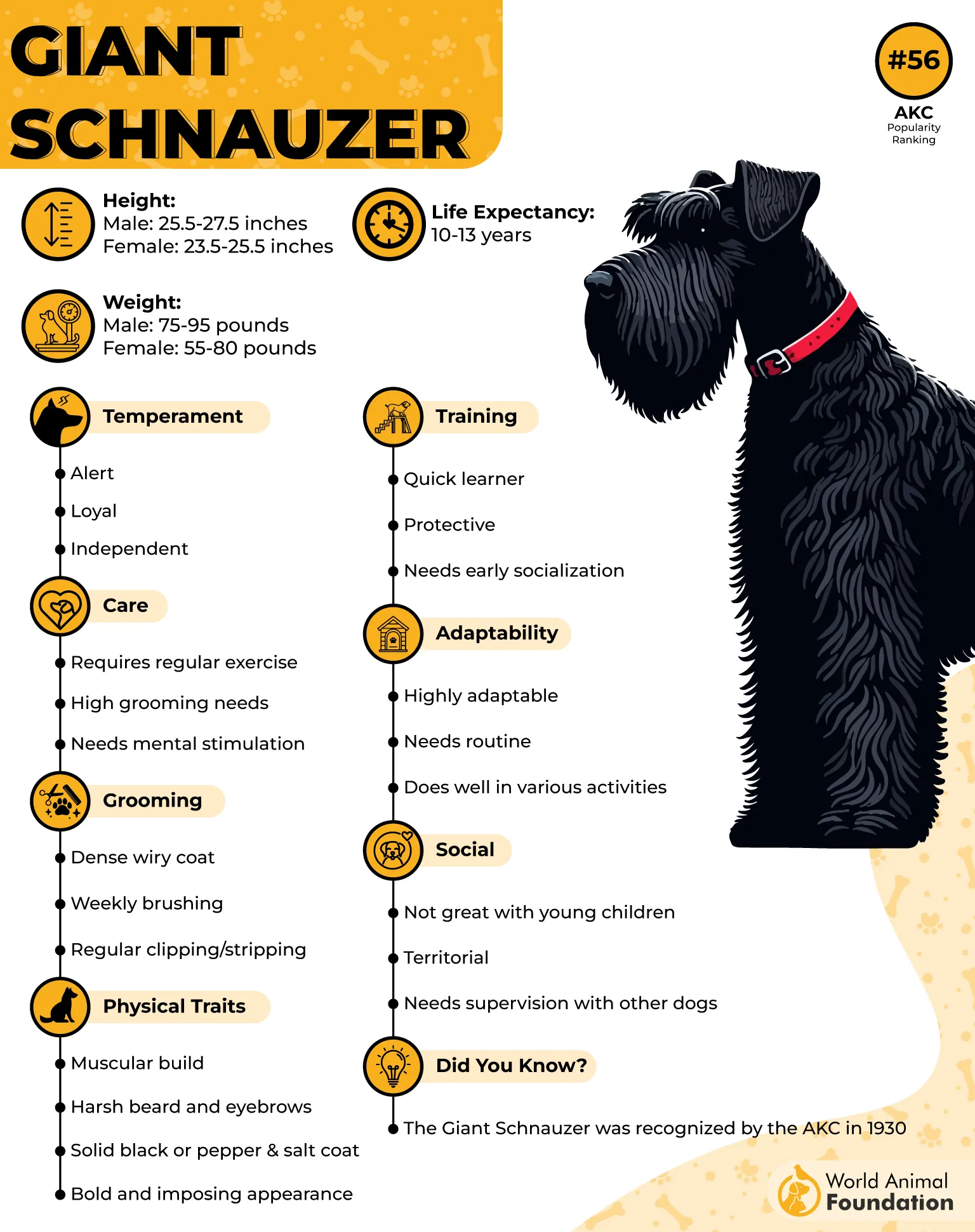
Behavioral Signs Before a Storm
These dogs often respond to approaching storms by displaying anxiety, such as pacing, barking at nothing, or seeking shelter. These reactions have been documented by pet owners and suggest their ability to pick up cues well before humans do.
Training Makes a Difference
With consistent mental stimulation and structured routines, their responses to storm-related triggers can be managed effectively. They benefit from having a predictable environment, helping to calm their reactions when dogs sense storms approaching.
6. Cane Corso
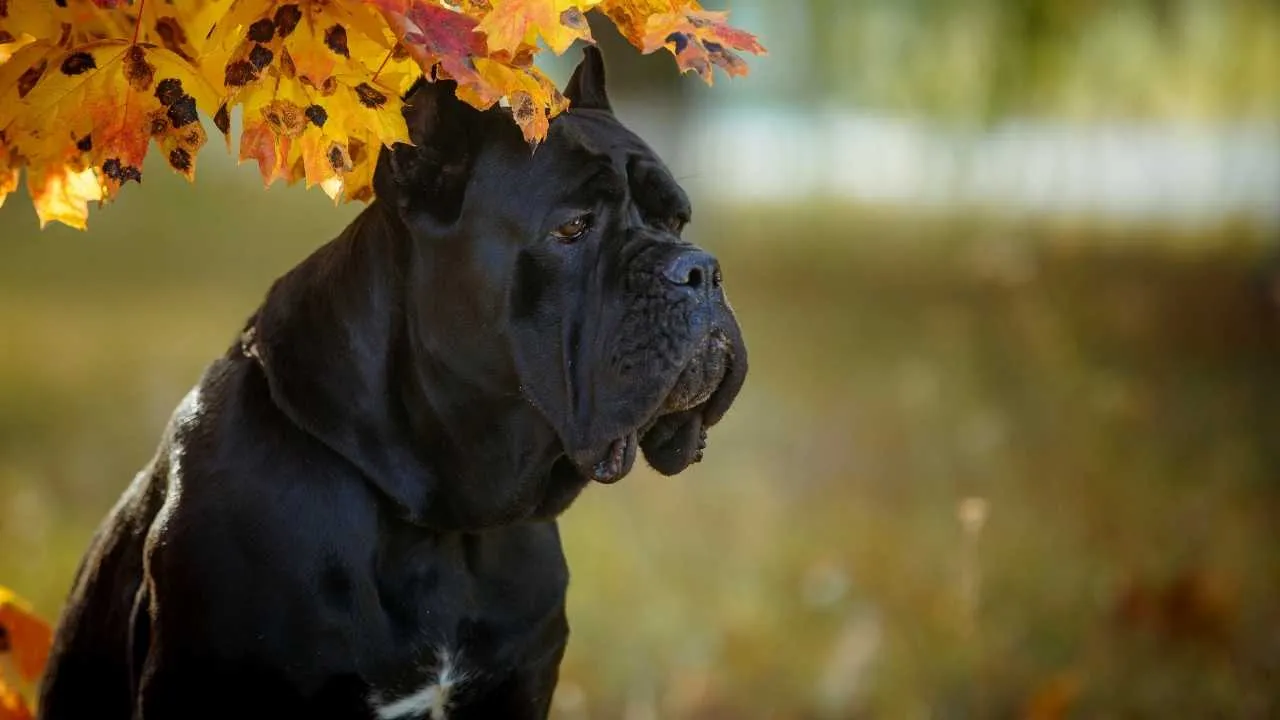
Cane Corsos have a deeply rooted guarding instinct, which makes them hyper-aware of environmental changes. They’re known to react to subtle shifts in their surroundings, from barometric pressure drops to distant thunder, often becoming restless before a storm begins.
Tuned-In to Their Territory
This breed forms a strong connection with their home and the people in it. Any disturbance in the atmosphere, like static changes or incoming weather shifts, doesn’t go unnoticed. They may start pacing, whining, or sticking unusually close to their owners well before the storm hits.
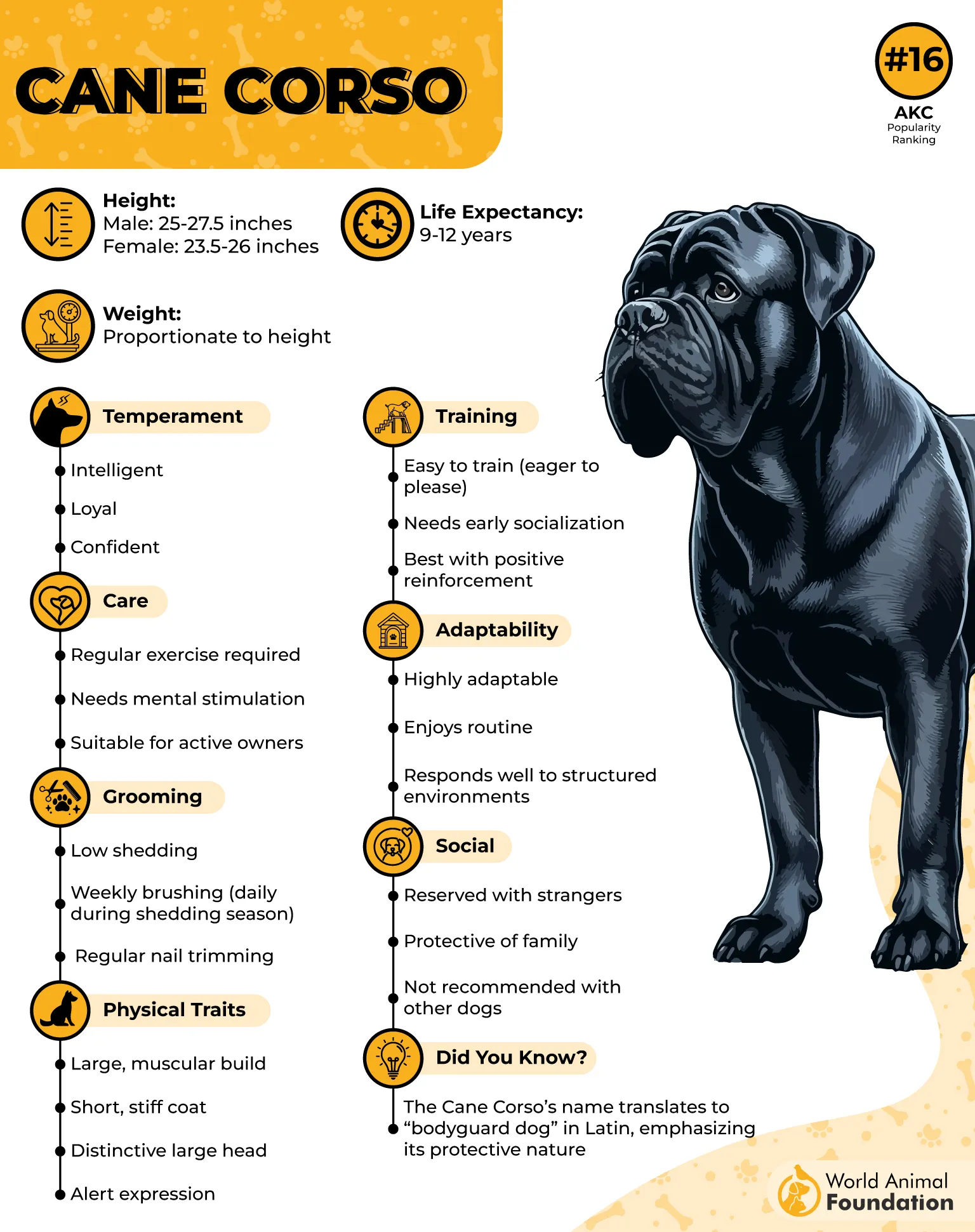
Deep Sensory Awareness
Their keen hearing lets them detect low-frequency sounds that most humans can’t hear, like thunder rumbling miles away. Combined with their acute sense of smell, they often react to the scent of ozone in the air, one of the earliest storm indicators.
Instinct-Driven Reactions
Corsos often act on gut instinct, and when a storm approaches, this drive kicks in. You might notice them heading to their preferred safe spots or showing signs of unease, signaling their awareness long before any weather alert is issued.
7. Doberman Pinscher
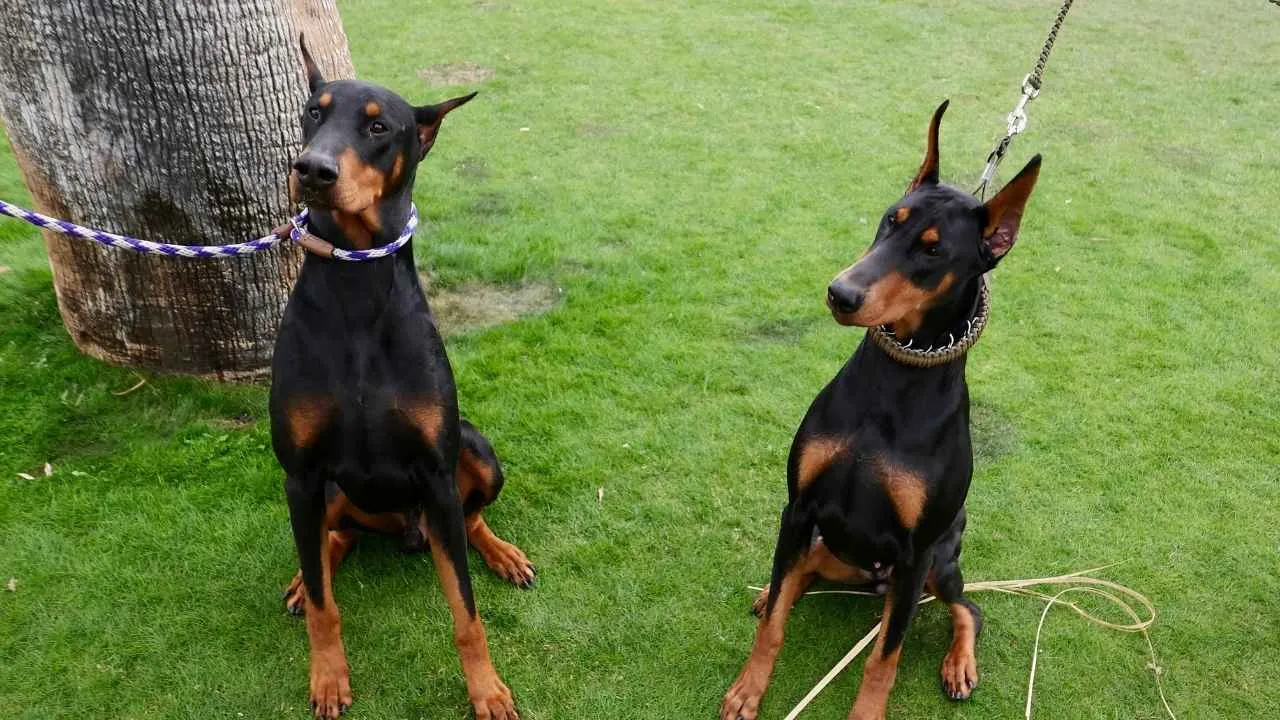
Doberman Pinschers are known for their alertness and sharp sensory perception, often picking up on subtle atmospheric shifts. Their sensitive hearing allows them to detect the distant rumble of thunder long before it reaches human ears. Combined with their high energy and focus, they react instinctively to changing weather cues.
Body Language Shifts
During weather changes, Dobermans may pace, whine, or try to seek shelter—behavioral signs owners have reported during pre-storm conditions. Their powerful bond with humans means they often try to warn or stay close when sensing danger.
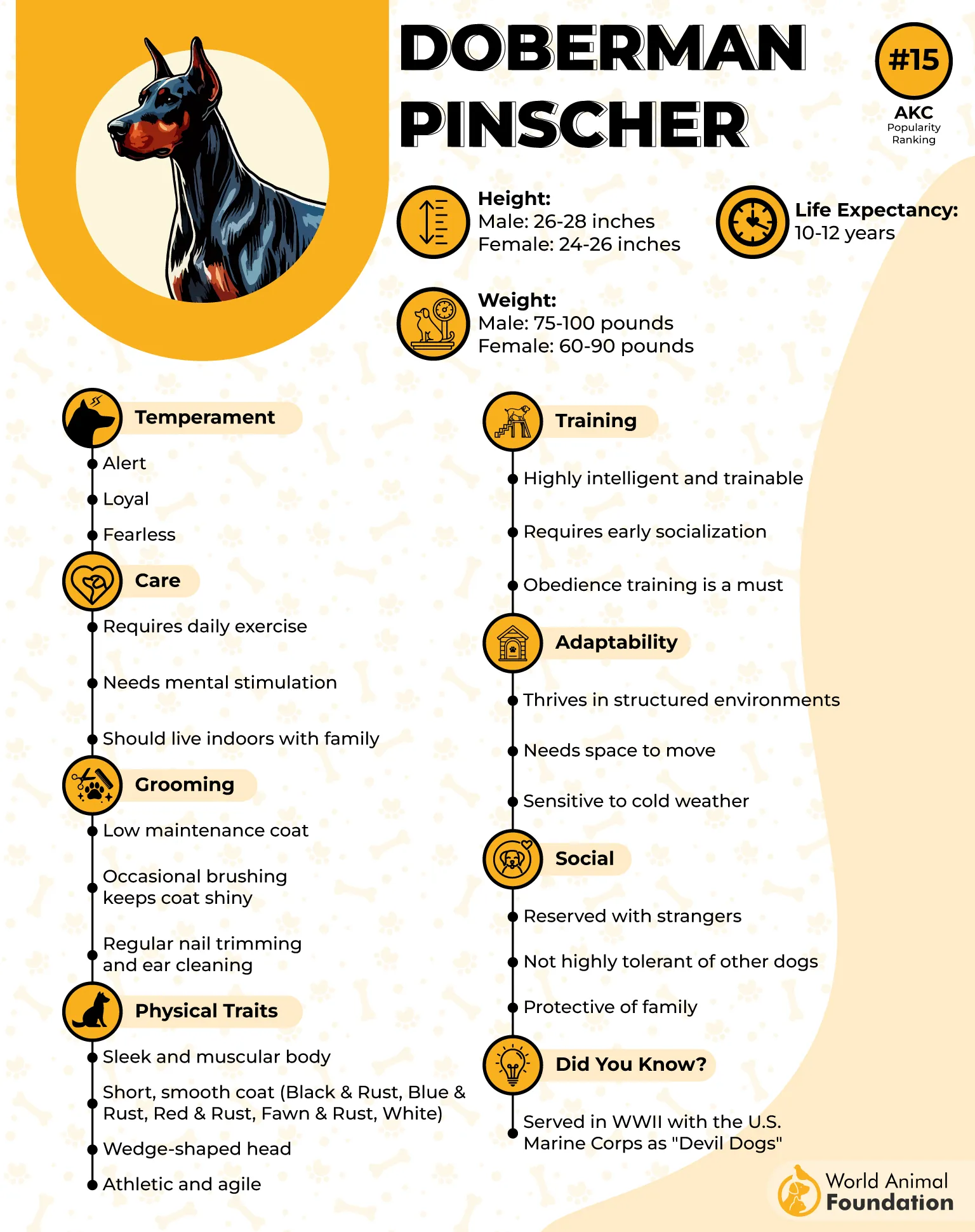
Strong Emotional Radar
Dobermans are highly attuned to their owners’ emotions and body language, which enhances their reaction to environmental shifts. This emotional intelligence, coupled with their natural protectiveness, leads them to become more alert or restless when sensing incoming disturbances.
Highly Responsive Nervous System
Their lean body and strong nervous system contribute to heightened reactivity. With quick reflexes and a high level of environmental awareness, Dobermans can react even to barometric pressure drops. This level of response has made them a breed often noted for their storm-sensing behaviors.
Conclusion
Dogs don’t need radar to read the sky. Some can detect storms long before we see dark clouds. Their enhanced hearing abilities help them pick up distant thunder, and some even react to static electricity changes in the air.
Others are known for their barometric pressure sensitivity, pacing, or hiding before inclement weather arrives. Their ability to perceive atmospheric shifts—whether it’s feeling the drop in pressure or smelling rain on the wind—is rooted in deep instinct.
As science continues to study how animals respond to weather, these dogs remind us just how tuned in they are. If your dog reacts before the storm hits, now you know—it’s not a coincidence.


